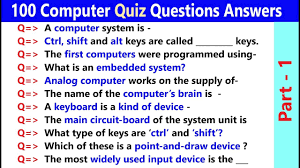Explain quantum computing in simple terms
Explain quantum computing in simple terms
Quantum computing is a type of computing that uses the principles of quantum mechanics, which is the branch of physics that deals with the behavior of matter and energy at a very small scale, to process information.
In classical computing, information is processed using bits that can be either 0 or 1, while in quantum computing, information is processed using quantum bits or qubits, which can exist in multiple states at the same time. This property of qubits allows quantum computers to perform certain calculations much faster than classical computers.
Quantum computing has the potential to solve complex problems that classical computers cannot, such as breaking complex encryption codes, simulating complex chemical reactions, and optimizing complex systems. However, quantum computers are still in the early stages of development and are not yet widely available for practical applications.
Quantum computing is a type of computing that uses the principles of quantum mechanics to process information. In classical computing, information is processed using bits that are either a 0 or 1, but in quantum computing, information is processed using quantum bits or qubits that can be both 0 and 1 at the same time, a property known as superposition.
This allows quantum computers to perform certain types of calculations much faster than classical computers, particularly those involving large amounts of data or complex algorithms. Additionally, quantum computing also allows for the exploitation of another quantum mechanical phenomenon called entanglement, where two or more qubits become correlated in such a way that their states are intertwined and cannot be described independently.
While still in its early stages of development, quantum computing has the potential to revolutionize fields such as cryptography, drug discovery, and optimization problems by providing more efficient and effective solutions to some of the world’s most complex problems.
Quantum computing is a type of computing that uses quantum mechanics to process information. In traditional computing, a bit is the basic unit of information, and it can be either a 0 or a 1. In quantum computing, however, a quantum bit (or qubit) can exist in multiple states at once, which means that quantum computers can process large amounts of information much faster than traditional computers.
This is because the behavior of subatomic particles, which are used to store and manipulate information in quantum computers, is inherently probabilistic and can be in multiple states at the same time. This allows quantum computers to perform certain types of calculations exponentially faster than traditional computers, which rely on the manipulation of classical bits.
In simple terms, imagine that traditional computing is like a person flipping a coin one at a time to determine the outcome of a calculation, while quantum computing is like a person flipping a handful of coins all at once, allowing for much faster and more efficient calculations. However, it’s worth noting that quantum computing is still a relatively new and complex field, and there are many challenges and limitations that researchers are still working to overcome.
Quantum computing is a type of computing that relies on the principles of quantum mechanics. Unlike traditional computers, which use bits to represent information in either a 0 or 1 state, quantum computers use quantum bits or qubits, which can represent information as a 0, 1, or a superposition of both states at the same time.
This allows quantum computers to perform certain calculations much faster than traditional computers. For example, a quantum computer could quickly factor large numbers, which is a crucial task for modern encryption methods.
Quantum computers also have the potential to solve complex problems in fields such as chemistry and materials science, which could lead to new discoveries and advancements.
However, quantum computing is still in its early stages of development, and it is challenging to build and operate these devices due to the fragile nature of quantum systems.

